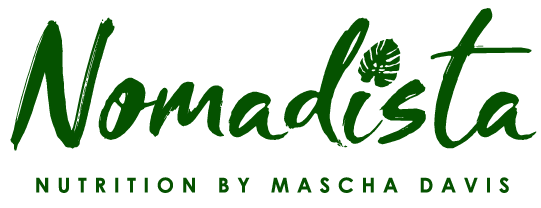November is the peak season for delicious fall produce, and it also marks National Diabetes Month which brings awareness to nutrition principles to support diabetes management and keep blood sugar levels balanced.
An excellent way to keep your blood sugar levels in check is by incorporating more produce into your meals. Fall produce is rich in various vitamins, minerals, and antioxidants that reduce inflammation, as well as fiber that helps balance the blood sugar response of a meal, making it the perfect addition to any fall recipe for those looking to manage diabetes.
Let’s dive into the top fall fruits and vegetables to add to your diet this month!
Pumpkin
While botanically a fruit, pumpkin contains over 200 percent of the Daily Value for vitamin A, which supports healthy eye function, immune function, and even thyroid health. Additionally, pumpkin is packed with 7 grams of fiber per cup, according to the USDA, making it an excellent choice for balancing blood sugar levels, aiding weight loss and promoting healthy digestion. To learn even more about why pumpkin is a secret ingredient for your weight goals, check out this article in which I was recently quoted. I recommend roasting pumpkin and adding it to salads, blending it into soups, or using pureed pumpkin in your morning smoothie.
Persimmon
Persimmons are a sweet treat packed with vitamins A and C, fiber, and antioxidants. Their natural sweetness comes with a low glycemic index, making them a great choice for those looking to manage blood sugar. Enjoy persimmons fresh by slicing them into salads or eating them like an apple! They also pair well with cheese and nuts for a delicious fall charcuterie board.
Apples
Apples are a classic fall staple. I like the saying, “an apple a day can keep the doctor away,” as they provide a good source of fiber and phytonutrients quercetin, catechin, and epicatechin, which have antioxidant properties and may help reduce inflammation and subsequently support diabetes management. Apples make a perfect blood sugar friendly snack when paired with natural peanut butter or as a topping on high fiber cinnamon oatmeal.
Butternut Squash
Butternut squash is a nutrient-dense, low-glycemic vegetable, meaning it has a lower blood sugar response compared to other carbs like white rice or bread. Another bonus is that one cup of butternut squash provides 48% of the Daily Value for vitamin C, which is optimal for immune health going into cold and flu season. Its sweet, nutty flavor makes it a wonderful addition to soups and salads. You can also puree it for a creamy pasta sauce or mash it as a delicious side dish.
Brussels Sprouts
These cruciferous vegetables are low in carbohydrates and provide ~4g fiber per cup, making them an excellent option for blood sugar control. For a tasty side dish, try sautéing them with garlic and balsamic vinegar. They also work well in stir-fries or shaved raw into salads for added crunch and nutrition.
As we embrace the flavors of fall and Celebrate National Diabetes Month, remember that incorporating these nutrient-dense fruits and vegetables into your meals can make a significant difference in managing your blood sugar levels and supporting overall health. Comment below how you plan to try these fall produce options!



